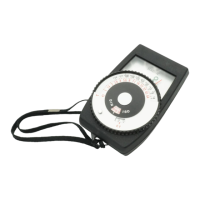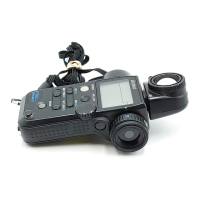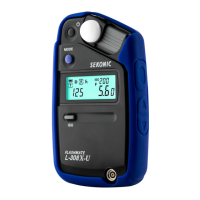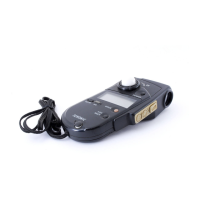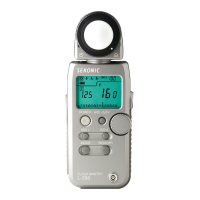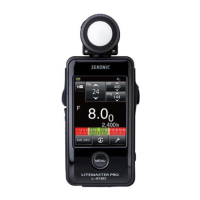CLOSE-UP METERING
This is always the most satisfactory method but not
always possible. Taking your meter close up to t he
subject entails some care. Four to six inches distance is
about right but be careful not to let the meter cast its
shadow on the surfaces you are metering.
Measure the intensity of light from various parts of the
subject. You will then appreciate the considerable
differences between the reflected light from differently
colored objects or surfaces.
Expose for the average value of the various readings
you make. Refer to the notes under "Color
Photography,"
INACCESSIBLE OBJECTS
A compromise exposure value con be determined by,
measuring the light reflected from the palm of your hand. .
See that the palm of your hand is facing the direction of the
light falling on the subject before making a reading.
Human skin has a reflectance value of 35 % and is therefore
reliable for determining the correct exposure for flesh tones.
Black objects have a reflectance value of 5 % or less,
whereas white objects may be as high as 90 %.
For important exposures, take three shots in a bracket. With black and-white films expose at the f/stop you
estimate first and then make two more exposures using 0 full stop above and below that far the first exposure.
With color film the difference should be not more then one half stop.
SNOW SEA AND WATER
Here you have to de concerned with average value The
general rule is to the extremely high reflectance value
increase your shutter speed by 50 to of these subjects
Almost invariably, a 100% % or close down the lens
by one meter reading of the mid-portion of the or one
and one-half stops to compensate scene will result in
overexposure Take for extremely high reflectance. The
two or three readings from different use of filters is
recommended for these objects nearby and expose for
the scenes

